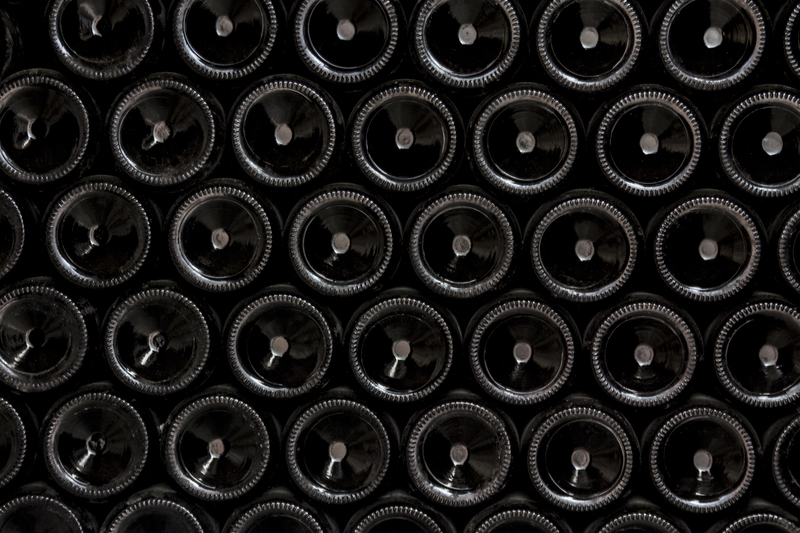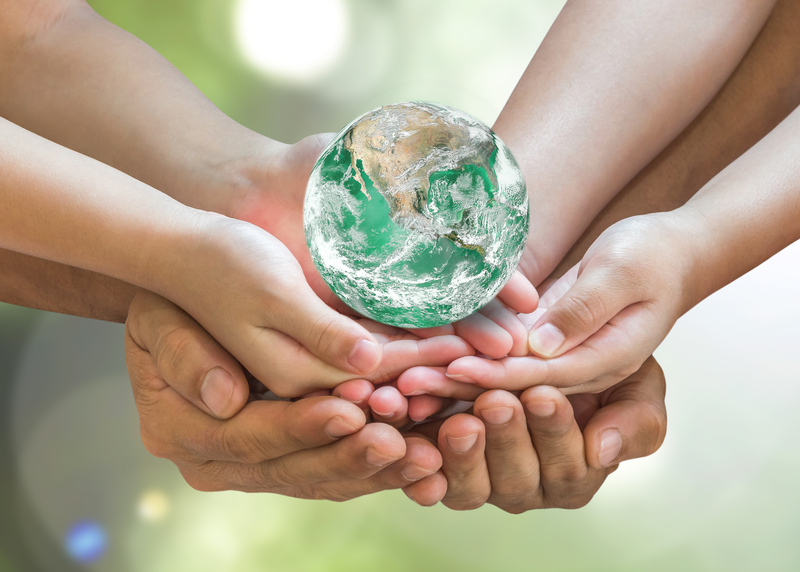Recycling Pots and Pans: Simple Steps Toward a Cleaner Planet
Every year, millions of pots and pans reach the end of their life cycle. But what truly happens to all that cookware? Do you toss them in the trash, where they'll spend centuries decomposing in a landfill, or is there a better way? In this comprehensive article, discover the importance of recycling pots and pans and learn practical steps you can take to contribute to a greener, cleaner planet.
Why Recycling Old Pots And Pans Matters
It's not uncommon to retire a battered frying pan or a warped saucepan and simply discard it with household waste. However, recycling cookware is essential for multiple reasons:
- Conserving natural resources: Cookware is often made from valuable materials like aluminum, stainless steel, and copper. Recycling these metals means less mining for new materials.
- Reducing landfill volume: Metal items take up unnecessary space and take hundreds of years to decompose.
- Lowering energy usage: Recycling metals uses significantly less energy than producing them from raw materials.
- Minimizing environmental pollution: Metals can leach toxins into soil and water sources if not disposed of properly.
Pots and pans recycling doesn't just keep your kitchen clutter-free; it actively supports a circular economy, promoting responsible consumption and production.

Understanding Which Pots and Pans Can Be Recycled
The first step in recycling used cookware is identifying what materials your items are made of. Most cookware falls into the following categories:
- Aluminum (lightweight, often silver in color)
- Stainless steel (shiny, rust-resistant)
- Copper (reddish-brown, often used for high-end pans)
- Cast iron (heavy, black or dark gray)
- Non-stick (coated with PTFE or Teflon)
- Enamel-coated (colorful exterior, sometimes chipping)
Most metal pots and pans, even those with minor plastic or wooden components (like handles), can be recycled after separating the non-metal parts. However, not all recycling centers accept non-stick or enamel-coated items because of the chemicals and mixed materials. When in doubt, check with your local center or municipality.
What About Non-Stick Cookware?
Non-stick pans pose extra challenges due to their chemical coatings, which can complicate cookware recycling processes. If you want to recycle a non-stick pan:
- Contact your local recycling facility to ask if they accept non-stick cookware.
- If not, look for specialized take-back programs--some brands and retailers accept returns of worn-out non-stick pans for proper recycling or disposal.
- In some cases, you may have to remove the non-stick coating (by sanding or scraping) before recycling as scrap metal.
How to Prepare Pots and Pans for Recycling
Recycling unwanted pots and pans requires a little prep work to ensure the items can be processed efficiently. Here's how:
Step 1: Remove Non-Metal Components
Detach all plastic handles, silicone grips, or glass lids from your cookware. These materials require different recycling methods and can contaminate metal recycling streams.
Step 2: Clean Thoroughly
While you don't have to scrub your old pans until they shine, make sure they're free of significant food residue and grease. This helps prevent issues during the melting and refining process at recycling facilities.
Step 3: Separate by Material
If you're recycling cookware made from different metals, sort them accordingly. Facilities often process aluminum, stainless steel, and copper separately to maximize efficiency and value.
Step 4: Check Local Guidelines
Every municipality has distinct rules for recycling larger items like pots and pans. Visit your city or town's waste management website, or call them directly, to clarify what is accepted and how to prepare your items for collection or drop-off.
Where to Recycle Pots and Pans
There are several convenient options to recycle old cookware. Explore these choices to ensure your pots and pans are disposed of responsibly:
1. Curbside Recycling Programs
Some cities accept small metal items in curbside recycling bins. Check your local guidelines--while beverage cans are always accepted, bulkier metal objects like frying pans may not be. Larger items are often rejected unless you have "bulk item" pickup days.
2. Scrap Metal Yards
Scrap yards are among the best places to recycle metal cookware regardless of material--stainless steel, cast iron, aluminum, and more. These facilities will weigh your items and pay you a small sum for the recyclable metals. Search online for local "scrap metal recycling" or "metal salvage yards."
3. Household Waste Recycling Centers
Most towns have a dedicated recycling center where you can drop off bulk metal waste and other hard-to-recycle items like old appliances:
- Check the schedule for drop-off days
- Ask which types of cookware and metals are accepted
- Comply with their preparation guidelines
4. Specialty Retailer Take-Back Programs
Some cookware retailers and manufacturers run in-store recycling programs for old pots and pans. For example, brands like Williams Sonoma and Sur La Table occasionally host recycling drives or offer trade-in discounts. Look for brand-specific instructions or call ahead to ask.
5. Community Sharing and Donations
If your pots and pans are still in usable condition, passing them on can be even better than recycling! Consider:
- Donating to local charities, shelters, or thrift stores
- Offering them to students, community kitchens, or neighbors
- Advertising on online marketplaces like Craigslist, Facebook Marketplace, or Freecycle
Note: Damaged or warped cookware not suited for reuse should still be processed at proper recycling centers.
Creative Ways to Repurpose Old Pots and Pans
Recycling isn't the only eco-friendly route. Upcycling gives your cookware new life as home decor or functional items:
- Garden planters: Drill drainage holes and paint or decorate your old pots for quirky outdoor planters
- Bird feeders or baths: Shallow pans make excellent DIY bird feeders
- Kitchen organizers: Use large pans to corral utensils, or hang them on walls for a rustic aesthetic
- Craft projects: Transform backs of pans into clocks, chalkboards, or wall art
Upcycling cookware not only prevents waste but sparks your creativity, turning old items into conversation starters.
Frequently Asked Questions about Recycling Cookware
Can you put pots and pans in the regular recycling bin?
Generally, household recycling bins are not designed for bulky metal items. Always verify with your local program first. Small towns and cities may permit it, but the majority require you to take metal cookware to dedicated centers or scrap yards.
What if my pot or pan has a plastic or wooden handle?
Remove any non-metal attachments before drop-off. If that's not possible, ask your local recycling facility if they have the means to separate components. Some centers may reject composite items, so it's best to separate parts yourself when you can.
Can Teflon or non-stick cookware be recycled?
Standard recycling plants rarely accept non-stick items due to the coatings. Specialized scrap yards or brand-specific take-back programs are better options. Be sure to contact the recycling provider first to avoid contaminating recycling streams.
Should I donate or recycle perfectly good pots and pans?
If your cookware is undamaged, donate it before recycling. Thrift stores, food pantries, or local shelters gladly accept gently used kitchenware, extending its life and reducing demand for new products.

The Environmental Impact of Recycling Cookware
Proper recycling of pots and pans yields significant environmental benefits, including:
- Reduced demand for raw metal mining, which can devastate ecosystems
- Conservation of finite resources like bauxite (used for aluminum)
- Lower greenhouse gas emissions as recycled metals use far less energy in production
- Cleaner land and waterways with fewer pollutants leached from landfilled metals
For example, recycled aluminum uses just 5% of the energy compared to creating new aluminum from ore--saving enough energy to power a TV for five hours with every recycled aluminum pan!
Conclusion: Small Steps Lead to a Greener World
Recycling pots and pans is a straightforward but impactful way to reduce household waste and environmental strain. By prepraing and sorting your old cookware, using the right outlets--scrap yards, recycling centers, or donations--you help close the materials loop and inspire others in your community to follow suit.
Together, we can forge a future where resourcefulness and environmental stewardship are part of every home. The next time you clean out your kitchen cupboards, remember: recycling your pots and pans is a simple step toward a cleaner planet!
Take Action: Start Recycling Your Cookware Today!
Don't let those old frying pans or saucepots end up in a landfill. With just a little effort, you can ensure your pots and pans recycling journey makes our planet cleaner and greener--one meal at a time.